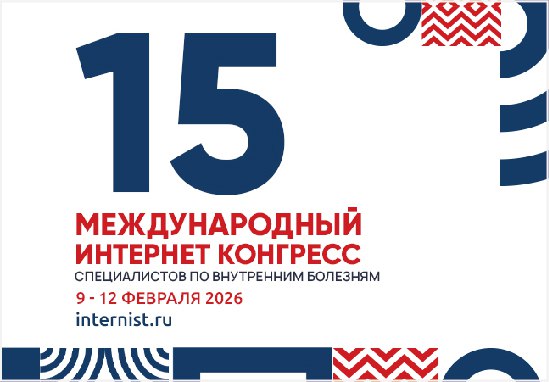Outpatient monitoring of patients with type 2 diabetes by a primary care physician. Guidelines
https://doi.org/10.15829/3034-4123-2025-52
EDN: GFIVSG
Abstract
The guidelines outline modern approaches to the diagnosis and treatment of type 2 diabetes, including clinical and paraclinical methods necessary for effective monitoring of patients’ condition. Key attention is paid to outpatient follow-up. Both drug and non-drug treatment methods are presented, aimed at preventing the progression of diabetes, reducing the risk of complications and improving the quality and duration of life of patients. Algorithmization and structuring of modern clinical guidelines and standards in terms of outpatient follow-up make the document relevant, practice-o riented and useful for health professionals. The inclusion of evidence data ensures the high efficiency of the proposed approaches and their application in routine health practice.
The guidelines are intended for district internists, general practitioners (family doctors), district internists of the shop medical district, as well as for secondary medical personnel working with these doctors, for paramedics of paramedic- obstetric stations (paramedic health centers) in case they are assigned the functions of the attending physician.
The guidelines can be used by public health physicians, heads of primary health care facilities and their divisions.
About the Authors
O. M. DrapkinaRussian Federation
Moscow
N. G. Mokrysheva
Russian Federation
Moscow
M. V. Shestakova
Russian Federation
Moscow
E. A. Lavrenova
Russian Federation
Moscow
P. V. Ipatov
Russian Federation
Moscow
I. N. Kononeko
Russian Federation
Moscow
T. A. Kunyaeva
Russian Federation
Moscow
M. A. Livzan
Russian Federation
Moscow
I. V. Druk
Russian Federation
Moscow
A. A. Svischeva
Russian Federation
Moscow
O. Yu. Suhareva
Russian Federation
Moscow
R. N. Shepel
Russian Federation
Moscow
E. I. Yamashkina
Russian Federation
Moscow
References
1. Dedov II, Shestakova MV, Galstyan GR. The prevalence of type 2 diabetes mellitus in the adult population of Russia (NATION study). Diabetes mellitus. 2016;19(2):104– 12. (In Russ.)
2. Balanova YuA, Shalnova SA, Imaeva AE, et al. Prediabetes: prevalence, associations with cardiovascular risk factors and contribution to survival in the Russian population. Cardiovascular Therapy and Prevention. 2024;23(5):4022. (In Russ.)
3. Shestakova EA, Lunina EY, Galstyan GR, et al. Type 2 diabetes and prediabetes prevalence in patients with different risk factor combinations in the NATION study. Diabetes mellitus. 2020;23(1):4–11. (In Russ.)
4. Drapkina OM, Karamnova NS, Kontsevaya AV, et al. Russian Society for the Prevention of Noncommunicable Diseases (ROPNIZ). Alimentary-dependent risk factors for chronic non-communicable diseases and eating habits: dietary correction within the framework of preventive counseling. Methodological Guidelines. Cardiovascular Therapy and Prevention. 2021;20(5):2952. (In Russ.)
5. U.K. Prospective Diabetes Study Group: Effect of intensive blood-g lucose control with metformin on complications in overweight patients with type 2 diabetes (UKPDS 34). Lancet. 1998;352(9131):854–65. Erratum in: Lancet. 1998;352(9139):1558.
6. Duckworth W, Abraira C, Moritz T, et al. Glucose control and vascular complications in veterans with type 2 diabetes. N Engl J Med. 2009;360(2):129–39. doi:10.1056/NEJMoa0808431.
7. ADVANCE Collaborative Group. Intensive Blood Glucose Control and vascular outcomes in patients with type 2 diabetes. N Engl J Med. 2008;358:2560–72. doi:10.1056/NEJMoa0802987.
8. Gerstein HC, Miller ME, Byington RP, et al. Action to Control Cardiovascular Risk in Diabetes Study Group; Effects of intensive glucose lowering in type 2 diabetes. N Engl J Med. 2008;358(24):2545–59. doi:10.1056/NEJMoa0802743.
9. Biryukova EV, Shishkin MV. The practice of sugar-lowering therapy: choosing the optimal drug from the group of dipeptidyl peptidase inhibitors 4. Effective pharmacotherapy. 2022;18(6):20–30. (In Russ.)
10. DeFronzo RA, Inzucchi S, Abdul-Ghani M, Nissen SE. Pioglitazone: The forgotten, cost-effective cardioprotective drug for type 2 diabetes. Diab Vasc Dis Res. 2019;16(2):133–43. doi:10.1177/1479164118825376.
11. Marso SP, Daniels GH, Brown-Frandsen K, et al. Liraglutide and Cardiovascular Outcomes in Type 2 Diabetes. N Engl J Med. 2016;375(4):311–22. doi:10.1056/NEJMoa1603827.
12. Gerstein HC, Colhoun HM, Dagenais GR, et al. Dulaglutide and cardiovascular outcomes in type 2 diabetes (REWIND): a double-blind, randomised placebo-controlled trial. Lancet. 2019;394(10193):121–30. doi:10.1016/S01406736(19)31149-3.
13. Marx N, Federici M, Schütt K, et al.; ESC Scientific Document Group. 2023 ESC Guidelines for the management of cardiovascular disease in patients with diabetes. Eur Heart J. 2023;44(39):4043–140. doi:10.1093/eurheartj/ehad192. Erratum in: Eur Heart J. 2023;44(48):5060. doi:10.1093/eurheartj/ehad774. Erratum in: Eur Heart J. 2024;45(7):518. doi:10.1093/eurheartj/ehad857.
14. American Diabetes Association Professional Practice Committee; 9. Pharmacologic Approaches to Glycemic Treatment: Standards of Care in Diabetes — 2024. Diabetes Care. 2024;47(Supplement_1): S158-S178. doi:10.2337/dc24-S009.
15. Kaplinsky E. DAPA-HF trial: dapagliflozin evolves from a glucose-lowering agent to a therapy for heart failure. Drugs Context. 2020;9:2019–11–3. doi:10.7573/dic.2019-11-3.
Review
For citations:
Drapkina OM, Mokrysheva NG, Shestakova MV, Lavrenova EA, Ipatov PV, Kononeko IN, Kunyaeva TA, Livzan MA, Druk IV, Svischeva AA, Suhareva OY, Shepel RN, Yamashkina EI. Outpatient monitoring of patients with type 2 diabetes by a primary care physician. Guidelines. Primary Health Care (Russian Federation). 2025;2(2):98-134. (In Russ.) https://doi.org/10.15829/3034-4123-2025-52. EDN: GFIVSG






















